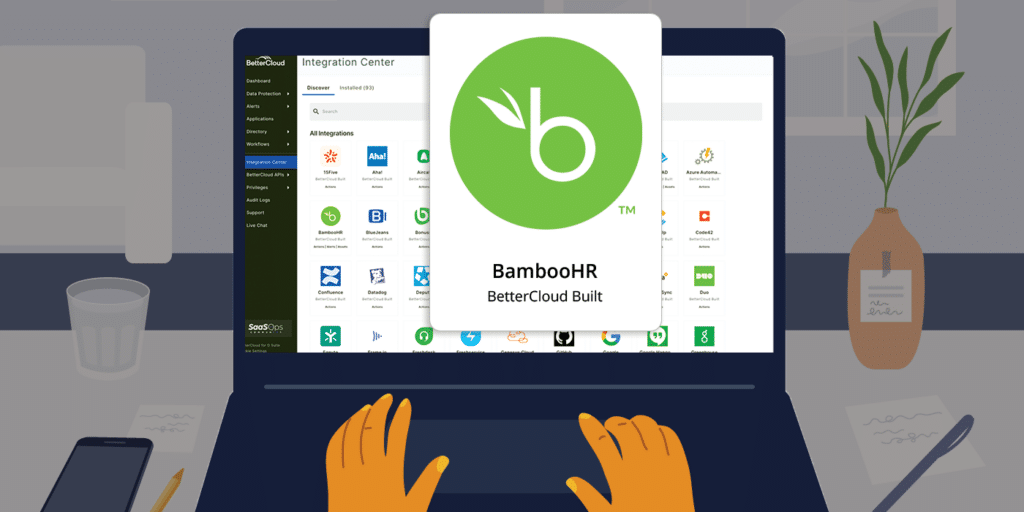SaaS Spend Management is a Program, not a Product or Application
8 minute read

SaaS spend management has become a prominent topic in businesses in 2023 for a variety of reasons, converging all at once. The rapid growth of SaaS adoption, expansion of the SaaS marketplace, need for cost optimization and efficiency, lack of visibility and governance, security and compliance concerns, and an increasing business focus on ROI and value optimization are all driving the increased importance of managing SaaS expenditure.
Further complicated by the ever-changing business landscape, characterized by diverse economic pressures and the likelihood of an atypical recession deviating from the usual 6-18 month duration, it is crucial to adapt and rethink traditional cost-saving approaches. Two key factors make the situation exceptionally unique: the accelerating adoption of Software as a Service (SaaS) amidst declining spend, and the likelihood of sustained high interest rates and increasing labor costs for years to come. Consequently, organizations must shift their focus from one-time cost-cutting measures to structurally transforming their approach to managing expenses.
The conventional strategy of negotiating with vendors and renegotiating contracts, only to witness costs gradually rise again, is no longer effective. It is time to recognize that SaaS spend management alone is a temporary fix. To truly address the challenges ahead, organizations should embrace a holistic approach to SaaS management that begins with User Lifecycle Management. By prioritizing this approach, businesses can optimize productivity through innovative and sustainable methods that go beyond short-term savings and instead provide a foundation for lasting cost management strategies.
By acknowledging the unique characteristics of the current macro environment and the changing dynamics of the business landscape, organizations can navigate the challenges ahead with confidence. Rather than viewing SaaS spend management as a mere product or service to be outsourced, it is essential to recognize it as a comprehensive program that is built in partnership with a mature approach to User Lifecycle Management. This programmatic approach enables organizations to proactively adapt to the evolving economic conditions, ensuring long-term financial stability and sustained growth. In a world where traditional methods no longer suffice, it is time to embrace a new paradigm of SaaS spend management and seize the opportunities it presents.
The Prominence of SaaS Spend Management
In today’s rapidly evolving business landscape, widespread adoption of SaaS applications has driven a surge in spending, prompting organizations to pursue the evaluation and effective management of these costs.
- Rapid Growth of SaaS Adoption Drove Spending: There has been a significant increase in the adoption of SaaS applications across organizations of all sizes and industries for the last decade. This widespread adoption has led to a surge in SaaS spending, making it necessary for businesses, facing a changing macroeconomic environment, to move quickly to evaluate and effectively manage and optimize these costs.
- Expansion of the SaaS Marketplace: The SaaS marketplace has become more diverse, offering a wide array of options for various business functions. While this provides organizations with flexibility and choice, it also introduces complexity in managing multiple applications, each with its own licensing model, subscription fees, and renewal cycles.
- Cost Optimization Imperatives: Businesses are actively seeking ways to optimize their IT budgets and maximize the value derived from technology investments. SaaS spend management has emerged as a critical area of focus for cost reduction and resource optimization, as organizations aim to control and optimize their spending on SaaS applications.
- Need for Visibility and Governance: The decentralized nature of SaaS adoption often leads to shadow IT, where different departments or teams independently procure and manage their SaaS applications. This lack of centralized oversight makes it challenging for organizations, and IT organizations specifically, to gain a holistic view of SaaS spending and enforce governance policies effectively.
- Security and Compliance Concerns: As businesses rely more on SaaS applications, ensuring data security and compliance with regulations has become a top priority. SaaS spend management, especially as part of a more comprehensive approach to SaaS management, helps organizations monitor and control access to SaaS applications, improving adherence to security and compliance requirements.
- Focus on ROI and Value Optimization: Organizations are shifting their focus beyond initial cost savings and aiming to maximize their return on investment. They want to ensure that the SaaS applications they invest in deliver the expected value and drive business outcomes. SaaS spend management allows organizations to evaluate the usage, value, and impact of their SaaS applications, enabling them to optimize their spending to achieve the desired ROI.
Organizations recognize the significant impact of SaaS spending on their overall IT budgets and strategic objectives, leading them to actively seek effective strategies and solutions to manage and optimize their SaaS expenditure.
SaaS Spend Management Requires a Program and Process, not just a SaaS product
This multitude of pressures causes many organizations to look for a solution in the form of a product or application to manage costs and spending. However, relying solely on a SaaS software product or application to handle SaaS spend management is not a viable approach, and here’s why:
- Limited Availability of Spend Data: Decentralized software procurement and limited APIs obstruct IT’s ability to implement a solely software-based solution that monitors and manages spending. Business units frequently procure SaaS applications independently, which leads to a lack of governance and limited IT understanding of each tool’s purpose. Moreover, many SaaS products lack APIs for automated spend data extraction, which leads organizations to typically rely on stale, outdated data that is painstakingly entered manually.
- Unique Contract Negotiations: Each organization negotiates SaaS contracts individually, with different bundles, terms, and pricing structures. Direct engagement between the organization and the vendor is necessary to negotiate and reduce costs effectively. While some powerful insights exist in the market to support teams to negotiate better, on the whole software products cannot replace the human interaction and negotiation skills required to achieve favorable contract terms based on unique business needs and conditions.
- Complexity of the SaaS Landscape: Managing SaaS spending becomes increasingly complex as organizations adopt numerous applications. On average, companies use around 130 SaaS applications, each with its own contract duration and pricing model.
- The Role of Services: Existing players in the SaaS spend management space have recognized the limitations of software solutions and have expanded their offerings to include services. These services act as outsourced procurement departments, combining technology with human expertise to effectively manage SaaS spend. This demonstrates that software alone is insufficient to address the complexities of SaaS spend management.
- Limited Cost Savings by Third-Party Vendors: Even when organizations engage procurement services, the potential cost savings may not surpass what organizations could achieve on their own. These services, which come at a cost, are a complement to the work often being done by internal teams.
Given these challenges, organizations must take ownership of SaaS spend. The most effective approach involves manually gathering spend data, identifying cost reduction opportunities, negotiating contracts directly with vendors, and implementing automated User Lifecycle Management (ULM) practices. By focusing on hygiene, such as automating ULM processes to allocate licenses based on need and removing them when employees leave the organization, organizations can make significant progress in controlling costs.
Relying solely on a SaaS software product or application for SaaS spend management is inadequate due to the limitations in obtaining spend data, the need for direct contract negotiations, the complexity of the SaaS landscape, the involvement of services for comprehensive management, and the limited cost savings achieved by third-party vendors. Organizations must adopt a hands-on approach, leveraging their own resources and implementing processes that align with their specific SaaS spend management goals.
User Lifecycle Management as the Foundation
User Lifecycle Management (ULM) is a critical component in effectively managing SaaS software spending and optimizing SaaS software usage within organizations. ULM encompasses various stages, including onboarding, mid-lifecycle management, self-service, and offboarding, each playing a vital role in controlling costs and ensuring efficient SaaS utilization. Here’s how ULM serves as a foundation for effective SaaS management and SaaS spending:
- Ensuring Proper Entitlements: ULM ensures that users have the necessary access to SaaS applications based on their roles and responsibilities. This includes assigning licenses to new users and reassigning licenses when users change teams or leave the organization. By actively managing entitlements, organizations can prevent unnecessary spending on licenses for unused applications and promote cost optimization.
- Mid-Lifecycle Management and Self-Service: SaaS usage fluctuates regularly due to factors such as temporary leaves, promotions, or shifting projects. In a mature mid-lifecycle environment, licenses for these applications can be reclaimed and reissued based on changes in organizational attributes – such as status, department, or title. Automated mid-lifecycle management drives reductions in total seat counts and increases overall spend efficiency. Empowering employees with self-service license requests allows end-users to access the right applications for the right length of time, without the headache of paying for license overages in the future.
- Offboarding: When an employee leaves the organization, ULM ensures that their access to SaaS applications is promptly disabled or removed. This involves making API calls to the providers to disable/delete/remove licenses associated with the departing user. By effectively managing offboarding processes, organizations can eliminate the costs of licenses for inactive workers, minimizing wasteful spending.
Implementing ULM automation significantly contributes to managing SaaS spending. It reduces IT ticket volumes by streamlining user onboarding, offboarding, and access management processes, freeing up IT resources for more strategic initiatives. Additionally, ULM brings high visibility and accountability to the organization, demonstrating a commitment to data security, compliance, and operational efficiency.
ULM’s impact extends beyond cost savings, providing scalability for global expansion by enabling seamless onboarding processes without heavy IT involvement. By automating ULM, organizations unlock operational efficiencies, improve employee experiences, and focus on strategic initiatives, leading to broader returns on investment.
ULM serves as the foundational pillar for effective SaaS management. By implementing ULM automation, organizations can ensure proper entitlements, reduce IT ticket volumes, enhance visibility and accountability, enable scalability, and realize a broader return on investment beyond cost savings. Prioritizing ULM sets the stage for comprehensive SaaS management, optimizing usage, and achieving long-term success in controlling SaaS software spending.
How BetterCloud Can Help
When it comes to SaaS Management, BetterCloud is the most qualified and trusted vendor, offering comprehensive solutions that address the critical aspects of SaaS Management and beyond. By starting with the strong foundation of ULM, BetterCloud enables organizations to effectively manage SaaS application access and entitlements, maximizing business productivity, and eliminating low value tactical work that saves IT organizations thousands of hours every year.
- Expertise in ULM: BetterCloud has extensive expertise in ULM based on over a decade of innovation and work in this space, recognizing its pivotal and foundational role in SaaS management and SaaS operations. With BetterCloud, organizations can automate and streamline the user onboarding, mid-lifecycle and offboarding processes, ensuring that employees have the right access to the right applications throughout their lifecycle. BetterCloud has over 3.8 billion assets under management and over the course of their work, has found over 62 million content violations through scanning and discovered over 883,000 applications. The company runs over seven million actions and over 3.4 million workflows on a monthly basis for over 1,000 clients saving thousands of hours annually and improving security posture. This experience and expertise allows organizations to maintain strict security protocols, comply with regulations, and eliminate the risk of unauthorized and unnecessary access.
- Holistic SaaS Management Platform: Beyond ULM, BetterCloud offers a comprehensive SaaS management platform that addresses the diverse needs of organizations. From granular visibility into application usage and permissions to automated security and compliance workflows, BetterCloud provides a centralized hub for managing the complete SaaS ecosystem. This holistic approach allows organizations to gain control, optimize costs, and ensure the seamless functioning of their SaaS applications.
- Advanced Security Capabilities: BetterCloud’s robust security features are designed to protect sensitive data and mitigate risks associated with SaaS applications. With real-time monitoring, automated security policies, and incident response capabilities, BetterCloud empowers organizations to proactively identify and address potential security vulnerabilities, ensuring a secure SaaS environment.
- Vendor-agnostic Approach: BetterCloud understands that organizations often utilize a variety of SaaS applications from different vendors. As a vendor-agnostic solution, BetterCloud supports a wide range of popular SaaS applications, allowing organizations to effectively manage and govern their entire SaaS ecosystem from a single platform. This flexibility ensures seamless integration and interoperability across different SaaS applications, eliminating silos and optimizing workflows.
- Thought Leadership and Continuous Innovation: BetterCloud is not just a vendor but also a thought leader and innovator in the SaaS management space. With a finger on the pulse of emerging trends and challenges, BetterCloud continuously partners with customers and the market to evolve the platform and address the evolving needs of organizations. By partnering with BetterCloud, organizations can leverage the latest advancements in SaaS management, mature their practices over time and embrace the discipline of SaaS Operations to keep pace with changing business priorities.
- Proven Track Record: BetterCloud has a proven track record of success, serving a wide range of organizations across various industries. By helping organizations achieve tangible results in cost savings, productivity improvement, and security enhancement, BetterCloud has built a strong reputation as a trusted partner in SaaS management.
BetterCloud’s deep expertise in ULM, comprehensive SaaS management platform, advanced security capabilities, vendor-agnostic approach, thought leadership, and proven track record position them as the most qualified vendor to help organizations with their SaaS management needs, which includes offering guidance about emerging trends like the topic of SaaS spend management. By starting with the foundation of ULM and leveraging BetterCloud’s SaaS Management Platform, organizations can optimize utilization of SaaS applications, enhance security, and unlock the full potential of their SaaS ecosystem while managing SaaS spend.





